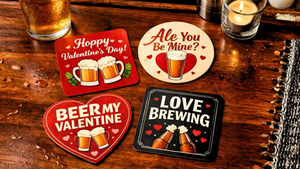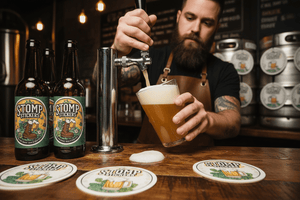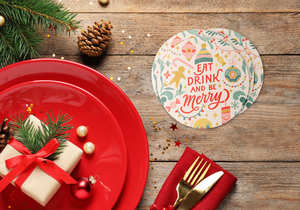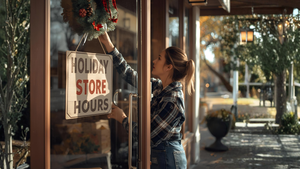How Plastic Cannabis Packaging Presents Obstacles for Sustainability

A 2018 environmental study predicted that by 2050, there will be 12 billion metric tons of plastic in landfills – that’s a lot of plastic waste!
And cannabis is not exempt from this conversation. Plastic remains one of the biggest issues for sustainability within the cannabis industry. Despite efforts from some producers that have proactively factored environmental sustainability into their packaging, many have not.
In this blog, we will explore where the industry is headed in the realm of sustainable and recycled packaging and explore more environmentally friendly and sustainable packaging choices.
How Plastic Cannabis Packaging Affects Sustainability
Some non-sustainable cannabis packaging issues are directly related to the fact that cannabis is a controlled substance. Federal regulations require cannabis products to be child-proof and tamper-proof. To achieve this, cannabis products are often packaged with inner and outer packaging, which creates a lot of waste.
Guidelines around cannabis packaging are even more restrictive than they are for tobacco and alcohol. Cannabis producers are mandated to:
- Ensure a safe product, prevent contamination from mold, pests, etc.
- Maintain seed-to-sale traceability.
- Label and package cannabis products according to state and federal regulatory guidelines.
Cannabis packaging must be robust enough to meet compliance standards but sustainable packaging materials could force producers to increase product costs and risk being priced out of the market. As such, it’s understandable that producers seek out the lowest cost solutions and often have to compromise sustainability for economy’s sake.
From a business standpoint, it’s simple dollars and cents. Recyclable packaging is often more costly and would raise the price of the product—or shrink profit margins. Neither scenario is ideal.
Some countries have already established provisions on plastic packaging use. In Canada, for example, cannabis regulators in the province of Quebec mandate the use of post-consumer recycled plastics in cannabis packaging. But until other regions adopt similar policies or standardize packaging rules, it’s up to the producers themselves to make those decisions.
How the Cannabis Industry Can Promote Environmental Sustainability
Despite the cannabis packaging controversy—and make no mistake, it’s a hot topic—cannabis is one of the safest agricultural products produced in the United States. Federal regulations do not allow the use of pesticides, chemical fertilizers, or most nutrients.
Some states, like Massachusetts, require cannabis producers to track and report water and energy usage. Such accountability may encourage producers to improve. Of course, there’s always room to do better. Reducing energy usage and carbon output with LED lights, limiting water usage, and controlling runoff are all ways the cannabis industry can work towards a more sustainable future. In many ways, they have fewer environmental hurdles to leap than many other industries, and yet…
Against this backdrop, cannabis packaging stands out as a piece of the environmental puzzle that simply does not fit.
Closing the Loop with Hemp-Derived Packaging
Interestingly, hemp itself could be a viable option. Hemp plastic is biodegradable, non-toxic, and renewable. Plus, it’s stronger, stiffer, and lighter than petroleum-based plastics. Because hemp plastic is more durable, there is a reduced chance of the packaging ripping or coming apart, which means that it’s safer too.
Packaging cannabis products in hemp plastic could create a circular economy (i.e., one that supports itself), but there is still a way to go. Hemp-based plastics are compostable but require higher heat to break down than home composting setups; therefore, wider adoption would require more industrial composting facilities to achieve full value. Still, bioplastics, like those made from hemp, are more sustainable than petroleum-based plastics.
And while reusable containers would be nice, legal compliance does not permit this to happen. Pharmaceutical product packaging, cannabis included, can’t be commercially reused. Of course, that shouldn’t stop the user from doing so.

These plastic cannabis containers are made from hemp plastic. They look and perform at the same level as standard plastic packaging, yet they’re made from hemp, a sustainable source. While they’re not readily compostable in your home compost, they do break down in high-heat industrial composters.
Here’s a good illustration of how hemp bioplastic breaks down. What looks very much like a standard plastic bottle is pretty much gone by day 73.

These hemp-based plastic packages and tubes are manufactured using 3D printing technology. While they might not pass muster for commercial distribution, they work well as take-out packaging straight from the supplier.

Bioplastic Alternatives: Meet PHA
Of course, there are other bioplastic products besides those made from hemp. Polyhydroxyalkanoates (PHA) is a natural polyester that occurs as a byproduct of bacterial fermentation. During synthesis, it converts plant-based oils into natural plastic that’s safe for consumable products.

These gorgeous PHA containers and tubes are 100% compostable and biodegradable. Even if they make it into our waterways or landfills, they will simply dissolve in time.
Best of all? PHA is 100% biodegradable. Even if it doesn’t make it to an industrial compost facility, where it will break down within 20 days (faster than hemp!), it will dissolve on its own in compost, soil, or water. Research is ongoing into finding better, less expensive ways of producing PHA from agricultural (plant) waste, food waste from restaurants, banana peels, and other food waste products.
Global companies like Pepsi and Nestle are paving the way for a PHA revolution. Working with Danimer Scientific, they are developing new packaging for snacks and water bottles, so we’ll likely see a lot more of this material in the market very soon. The more they invest, the more PHA there will be, and the cheaper it will become, presenting a greater likelihood of the stuff gaining a foothold in the cannabis packaging market.
For most consumers—and manufacturers, for that matter—it will be a welcome innovation. Consumers today are far more aware of environmental issues, and most will pay more for sustainable products. Many cannabis users may not give the matter a second thought, but in the greenest industry on the planet, health and safety are always top-of-mind.
Check out Stomp’s range of cannabis packaging products and start designing yours today. As an added bonus, all of our paper roll labels easily break down and our waterproof clear or white BOPP roll labels are recyclable!
- Marketing Team














